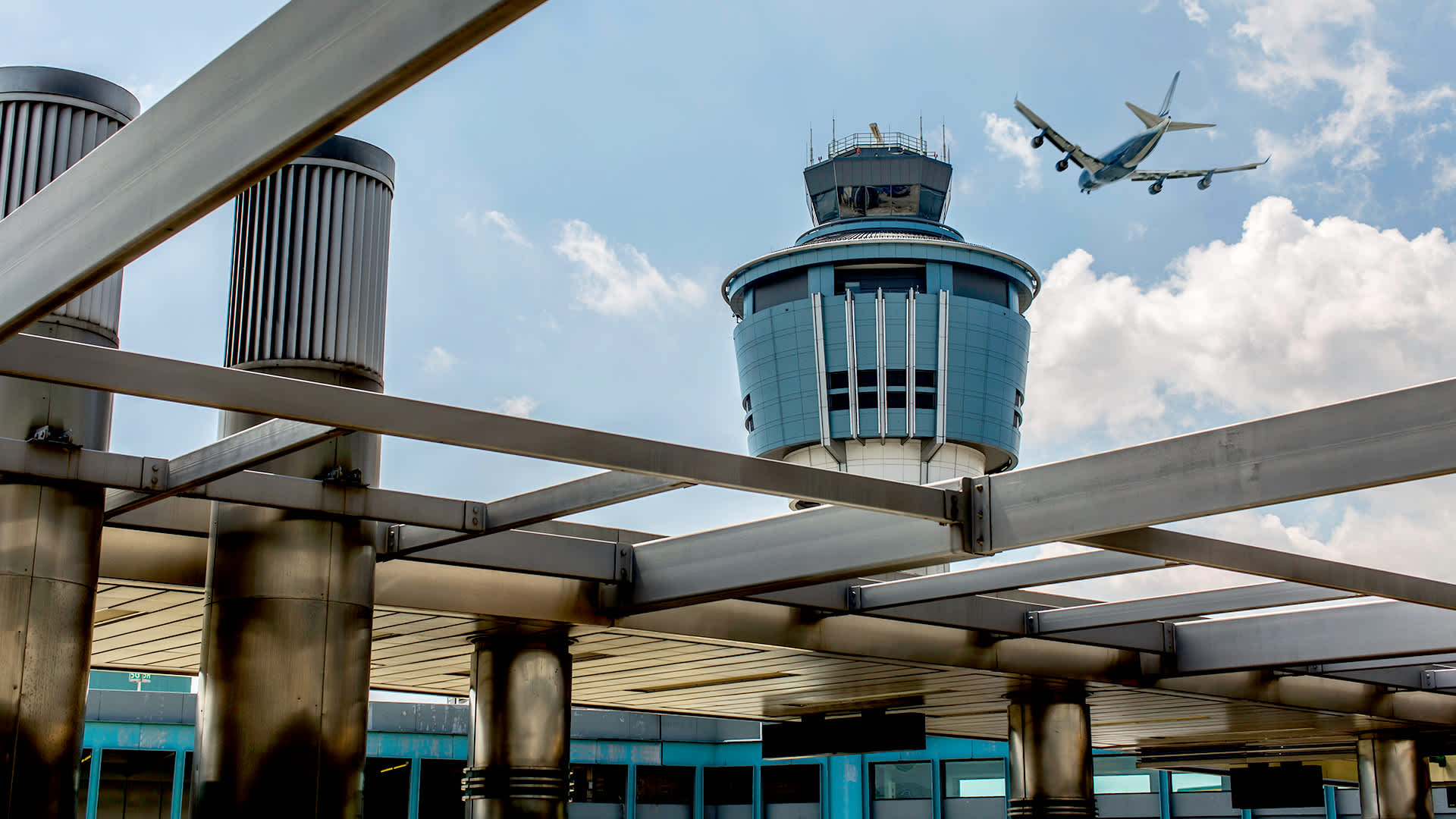
Standing on Level 2 of LaGuardia Airport’s (LGA) Terminal B parking facility, Mike Chisolm, Lyft’s business development manager for airports, opens the Lyft app on his phone, looking for a ride to New Jersey. “See? One minute,” he says, pointing at the ETA for a Lyft “Priority Pickup.”
Long a sore spot for travelers and New Yorkers, LaGuardia has undergone a remarkable, award-winning transformation. And the outcomes of that overhaul aren’t just aesthetic. LGA, according to aggregated Lyft data, now has faster pickups than at any other major airport in the country. You might even get one in a hot New York minute.
This feat in airport optimization wasn’t an accident, but the result of careful, collaborative planning.
When rideshare first arrived in New York City, around 2011, it “did catch us by surprise,” says Michael La Fazia, who leads traffic management at LaGuardia. Drivers looking to pick up an airport fare “just kind of pulled over on the side of the road wherever they could.” It wasn’t always close — or quick.
In response, the airport created remote “staging lots” close to the terminals where drivers could wait. But they still had to traverse the same roadway as everyone else, joining a very crowded “terminal frontage” bustling with taxis, buses, and personal vehicles.
Then, in 2016, LaGuardia began a multibillion-dollar renovation project. The plans had been drawn up long before rideshare even existed, but as Lyft and others began accounting for a larger share of LaGuardia’s pickups, its engineers saw an opportunity to make it easier to connect drivers and riders more quickly and conveniently. They started meeting biweekly with Lyft to learn how they could adapt their construction with rideshare in mind.
The payoff is evident today at Terminal B. Instead of a crowded scrum of rideshare services and “civilian” drivers, rideshare drivers ascend to Level 2 via a dedicated lane that is physically separated from other drivers. Once there, they find an orderly set of lanes — labeled A to F — each with a series of discrete bays. Lyft users requesting a ride will be directed to lane E or F (or J, for Lyft Black), where they will find their vehicle waiting.
“Pedestrian managers are there,” says Ian Van Praagh, LaGuardia’s manager of landside operations and customer service, to “assist the passengers, as well as to help the flow of vehicles in and out of the garage.” If users do have to wait, says Van Praagh, there are benches and chargers protected from the elements.
Meanwhile, for drivers, new staging lots include a meditation room and bathrooms. And when drivers on the Lyft platform noted a bit of a delay in communicating with customers via the app, the LGA team added beacons to boost wireless connectivity in the garage.
However, one of the biggest secrets to the fast pickup times is not immediately visible to the rider. A certain number of cars — the number is capped by LaGuardia — are “pre-dispatched,” as Lyft’s Chisolm calls it, directly to the pickup facility rather than the staging lot. (The number of cars is derived from historical demand data.) This not only ensures a faster pickup but also helps alleviate overcrowding at the staging lots. And, working with Lyft, the airport allowed the company to institute a “rematch” feature, meaning drivers dropping off passengers can be immediately paired to a pickup, without necessarily stopping in the staging lot.
Given the record fast pickup times, the attention to detail has paid off — despite tremendous volume: “In 2023,” notes Van Praagh, “we had about four million pickups from rideshare, versus one million for taxis.”
From scrambling to catch up, LaGuardia, working with Lyft, has become a model for airport rideshare. “I feel like within our agency,” La Fazia says, “LaGuardia has sort of become the best practice for our other airports to emulate.”
